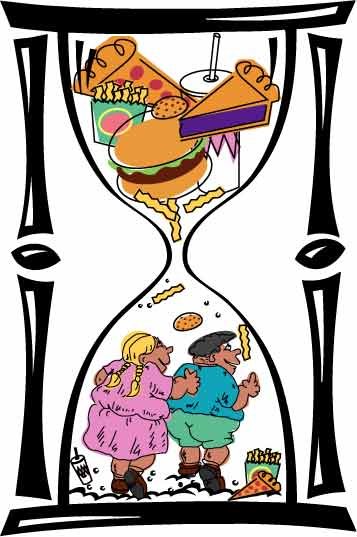The news is everywhere: Americans are fat and getting fatter.
And while the problem is dangerous enough for adults, it can be
devastating for children, burdening small bodies with big
diseases.
The news is everywhere: Americans are fat and getting fatter. And while the problem is dangerous enough for adults, it can be devastating for children, burdening small bodies with big diseases.
Type II diabetes, high blood pressure, sleep apnea, lack of physical dexterity, muscle atrophy, liver and joint problems, cardiovascular disease and asthma are just some of the problems that are starting to affect children more and more as the rates of childhood obesity rise across the nation.
The rates in San Benito and southern Santa Clara counties are high as well.
According to the Centers for Disease Control’s 2002 Pediatric Nutrition Surveillance report, 20.7 percent of low-income children ages 5 to 19 in Santa Clara County, are overweight and another 16.5 percent are at risk of becoming overweight. Many of those children are in Gilroy, an area with high poverty and a large population of Latinos, both factors in overweight rates.
The data in the report comes from low-income children, because their numbers are culled from free medical screenings for low-income families, said Lillian Castillo, a registered dietitian who leads the Gilroy Nutrition Task Force, and who hopes to get a nutrition policy in schools.
San Benito County’s numbers are worse. For children ages 5 to 19, 28 percent are overweight and 19.7 percent are at-risk, according to the report.
“That’s a lot,” said Jacqueline Thompson, a consulting dietitian for San Benito Health Foundation in Hollister. “That’s the largest of the 53 counties in California.”
It’s a problem that not only affects physical health, but that can affect children’s mental health as well.
“Kids tease about everything,” Thompson said, “anything that makes a child look different.”
The contributors to children being overweight are numerous: too many hours spent playing video games, the availability of junk food, poverty, genetics, even ethnicity – the rates of overweight children in San Benito and Santa Clara counties are highest in the Hispanic community, which accounts for 54 percent of Gilroy’s population, about half of Hollister’s and about 35 percent of Morgan Hill’s.
The reasons for the high rate in Hispanics are many, Castillo said. And recent immigrants are typically thinner than those who have been here for a long time or who were born here.
“With acculturation there’s an increase in weight gain. But that’s across the board with any immigrant group,” Castillo said. “When they come to this country, physical activity decreases, portion sizes increase, and many times, the food that was considered luxury items are more readily available.”
So what’s a parent of an overweight child to do?
First, don’t panic; the problem is something parents can handle by working with their children.
Second, eat healthy foods yourself.
“The main thing for parents is they need to be a role model for their kids,” said Carol Berg Sloan, a registered dietitian and spokeswoman for the Coalition for a Healthy and Active America, a national nonprofit organization working to promote nutrition and exercise for children. “Where you guys are, you have so much produce – beautiful produce. Parents need to take advantage of those.”
Third, get moving.
“More and more research is finding that exercise is just as important as what the kids are eating,” Berg Sloan said. She suggested after-dinner walks, walking the dog or doing other activities together that give exercise, but don’t necessarily seem like it. “It also gives you time to hang out with your kids and blab and find out what went on today.”
And crash dieting or restricting foods aren’t necessarily the best ways to help children.
“Instead, create a good eating habit over a lifetime,” Thompson said. “Eating a variety of healthy foods, like vegetables and fruits, at regular periods during the day is better than dieting all at once.”
Children don’t automatically grow out of “baby fat:” an overweight child has an 80 percent chance of being an overweight adult, Berg Sloan said.
Kids are exposed to lots of advertising and lots of opportunities to eat bad foods or decide to sit inside instead of playing outside. But parent modeling can help them learn to make good choices that will affect them throughout their lives.
Freelance writer Carolyn Straub contributed to this report.














